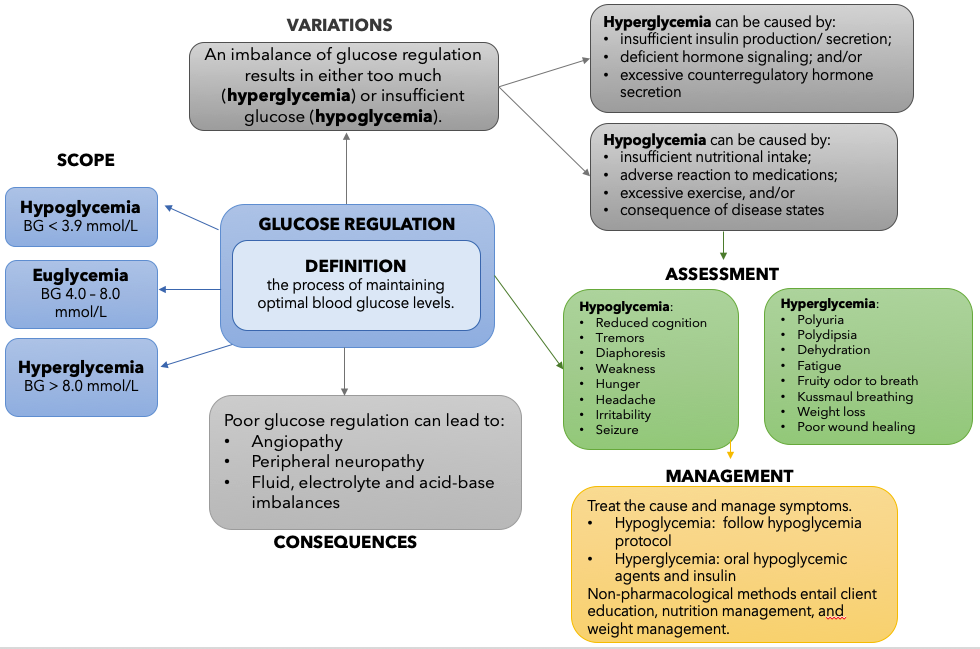Resources
Concept Map: Glucose Regulation
Amanda Egert; Kimberly Lee; and Manu Gill

Image Description
This flowchart describes the Concept of Glucose Regulation. In the centre of the chart, Glucose Regulation is defined.
The definition of the Concept of Glucose Regulation is: the process of maintaining optimal blood glucose levels.
Next, there are 3 arrows pointing from the definition to the Scope of Glucose Regulation. The scope is divided into 3 categories: Hypoglycemia (BG < 3.9 mmol/L), Euglycemia (BG 4.0 – 8.0 mmol/L), and Hyperglycemia (BG > 8.0 mmol/L).
Next, one arrow points from the definition to the Variation of Glucose Regulation. An imbalance of glucose regulation results in either too much (hyperglycemia) or insufficient glucose (hypoglycemia). Both hyperglycemia and hypoglycemia are further described.
Hyperglycemia can be caused by: insufficient insulin production/ secretion; deficient hormone signaling; and/or excessive counterregulatory hormone secretion.
Hypoglycemia can be caused by: insufficient nutritional intake; adverse reaction to medications; excessive exercise, and/or consequence of disease states.
Next, an arrow points down towards Assessment for Glucose Regulation. Here, a summary of hypoglycemia and hyperglycemia symptoms are listed.
Hypoglycemia: Reduced cognition, Tremors, Diaphoresis, Weakness, Hunger, Headache, Irritability, Seizure.
Hyperglycemia: Polyuria, Polydipsia, Dehydration, Fatigue, Fruity odor to breath, Kussmaul breathing, Weight loss, Poor wound healing

